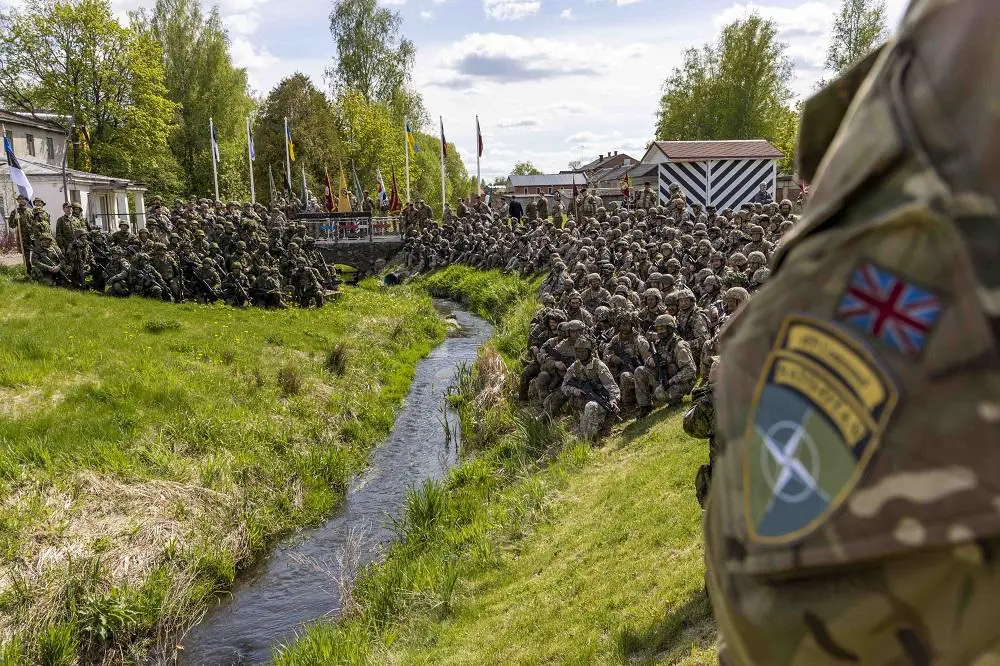“Together we are stronger” were the closing words from Lieutenant Colonel Kaido Tiitus, Commander of the Estonian Defence League’s Southern Command. He was addressing a highly symbolic military ceremony held with troops from across Europe and beyond, as they stood assembled either side of the small river that forms the border between Estonia and Latvia. The scale and complexity of Hedgehog was mightily impressive with the British Army providing a somewhat heavy presence among the 10 participating nations; not least due to the 64 tonne Challenger 2 main battle tanks and 25 tonne Warrior armoured fighting vehicles sent to support the Estonian 2nd Infantry Brigade in the south of the country. The ceremony marked the successful completion of the mobilisation of Estonia’s Reserve Forces and the starting point for the latest in a series of multi-national NATO exercises based in and around the Baltics. Codenamed Exercise Hedgehog, or Exercise Siil in Estonian, it was the largest military exercise ever to have taken place in the history of the country.
Hedgehog is an annual exercise designed to test the security of NATO’s eastern flank, referred to as the ‘B three P’ – the three Baltic States (Lithuania, Latvia, Estonia) and Poland. The Deterrence factor towards any aggressive neighbouring state who may covet the thought of rolling across the border was another major consideration in the planning of Hedgehog. Estonia shares a border with Russia and there is a palpable heightened level of concern following the events of the 24 February in Ukraine. For the past nine months that presence has been around 700 troops of the Royal Tank Regiment (RTR) battlegroup and for Exercise Hedgehog they were joined by a further battlegroup centred on the armoured infantry of the Royal Welsh meaning the British Army contributed some 1500 troops to Hedgehog. Hedgehog has had two significant effects, the first is it sends a very clear message about the UK, Estonia and NATO’s commitment to our security and that British Army are willing to do whatever is required to defend each other. The second is, it enables British Army to increase preparedness for anything that comes in thr future.

Exercise Hedgehog took place to the south of the country in the Valga and Voru regions along its border with Latvia where the primary military unit is the 2nd Infantry Brigade into which the RTR Battlegroup was integrated. Estonia’s military, its Defence Force is made up of a contingent of regular officers, conscripts and a large number of reservists who can be called on to mobilise should the country be threatened. This year more than 15,000 people are taking part and a third is international, so it is very important in terms of self-defence and within the collective defence. One of the unique points to the exercise, from a soldier’s perspective, was that it was carried out entirely in public rural and semi built-up areas mimicking precisely the type of terrain they could expect to have to fight through if ever the threat materialised.
As one of NATO’s smaller states, Estonia relies heavily on its military reservists of the Estonian Defence League (EDL). The Reservist soldier will have served 11 months full-time as a conscript; this gives them their basic training which prepares them to take up service in the EDL. Much like their British Army’s Reservist counterparts, the reserve soldiers in the EDL are drawn from all walks of civilian life. Estonia has asked NATO for command centers capable of overseeing more than 10,000 troops and the bloc’s military operations in the Baltics to counter Russia amid the ongoing war in Ukraine. Estonian security is guaranteed by the membership in the North Atlantic Treaty Organization (NATO) and the European Union, as well as close cooperation with allies and other international partners.












